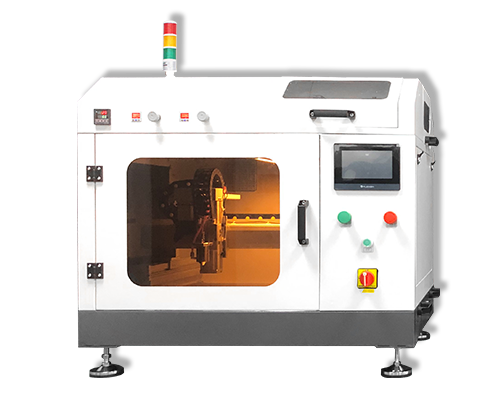Introduction to Membrane Electrode Assembly
Introduction to Membrane Electrode Assembly – MEA Coating Techniques – Cheersonic
Membrane electrode assembly (MEA) is the core component of fuel cell, which helps to generate the electrochemical reaction required for electron separation. The catalyst layer of the membrane electrode provides a three-phase material transport interface and an electrochemical reaction site, enabling reaction gases, protons and electrons to react on the electric catalyst. The cathode catalyst layer and anode catalyst layer are close to both sides of the proton exchange membrane, which provides a transfer channel for protons from anode to cathode. The gas diffusion layer in the membrane electrode usually directly contacts with the flow channel on the bipolar plate, playing the role of mechanical support, electronic conduction, reaction gas diffusion and drainage.
A typical MEA is mainly composed of proton exchange membrane (PEM), two catalyst layers (cathode and anode) and two gas diffusion layers (GDL). MEAs with this configuration are called 5-layer MEAs because of their composition. The alternative version of membrane electrode module is 3-layer MEA, which is composed of proton exchange membrane. The catalyst layer is applied to both sides of anode and cathode. Another name for this type of MEA is Catalyst Coating Membrane (CCM). For an example of each type, see the following figure:
Some of the main differences between the two types of MEA (5 or 3 layers) are the presence of GDL and the location of the catalyst layer used. In 5-layer MEA, GDL is a porous carbon paper or carbon cloth, and one side of the cloth is coated with a microporous layer (MPL). The gas diffusion layer must have good mechanical strength, proper pore structure, good conductivity and high stability. Generally, the gas diffusion layer is composed of a support layer and a microporous layer. The support layer material is mostly hydrophobic treated porous carbon paper or carbon cloth. The microporous layer is usually composed of conductive carbon black and hydrophobic agent. The role of the microporous layer is to reduce the contact resistance between the catalytic layer and the support layer, so that the reaction gas and product water can be evenly redistributed between the flow field and the catalytic layer, which is conducive to enhancing conductivity and improving electrode performance. In the manufacturing process, the gas diffusion layer is used as the support, the catalyst is coated on the gas diffusion layer to form the gas diffusion electrode, and then the gas diffusion electrode GDE is hot pressed on both sides of the proton membrane to form the membrane electrode.
The 3-layer MEA is not attached with GDL. In the preparation process, the catalyst is first coated on both sides of the proton exchange membrane to form CCM, and then the gas diffusion layer is hot pressed on both sides of the CCM to form membrane electrodes.
The main function of proton exchange membrane in fuel cells is to realize rapid proton transmission, and also to block the permeation of hydrogen, oxygen and nitrogen between the cathode and anode.
The catalytic layer is an important part of membrane electrode. The anode uses catalyst to promote hydrogen oxidation reaction, involving oxidation reaction, gas diffusion, electronic movement, proton movement, water migration and other processes. The cathode uses a catalyst to promote the reduction reaction of oxygen, involving the reduction of oxygen, oxygen diffusion, electronic movement, proton movement, and the discharge of water generated by the reaction.
Gas diffusion layer (GDL): two porous gas diffusion layers (GDL) clamp the membrane electrode assembly in the middle, mainly for supporting the catalytic layer, collecting current, conducting gas and discharging reaction product water. The gas diffusion layer is composed of a support layer and a microporous layer. The support layer materials are mainly porous carbon fiber paper, carbon fiber cloth, carbon fiber non-woven fabric and carbon black paper. The microporous layer is usually composed of conductive carbon black and hydrophobic agent.
Our coating solutions are environmentally-friendly, efficient and highly reliable, and enable dramatic reductions in overspray, savings in raw material, water and energy usage and provide improved process repeatability, transfer efficiency, high uniformity and reduced emissions.
• Very high Platinum utilization proven in MEA fabrication; as high as 90%.
• Highly porous coatings are extremely durable, preventing cracking or peeling of catalyst layer.
• Up to 50% reduction in material consumption with reduced overspray, conserving expensive catalyst inks.
• Clean, precise spray patterns that are easily shaped for various applications.
• Highly controllable spray that produces reliable, consistent results.
• Non-clogging atomized spray that does not deviate.
• Excellent stiction “adherence” to PEM; optimal for high vibration fuel cell applications such as automotive parts.
Cheersonic is a developer and manufacturer of ultrasonic coating systems for applying precise, thin film coatings to protect, strengthen or smooth surfaces on parts and components for the microelectronics/electronics, alternative energy, medical and industrial markets, including specialized glass applications in construction and automotive.
Chinese Website: Cheersonic Provides Professional Coating Solutions


